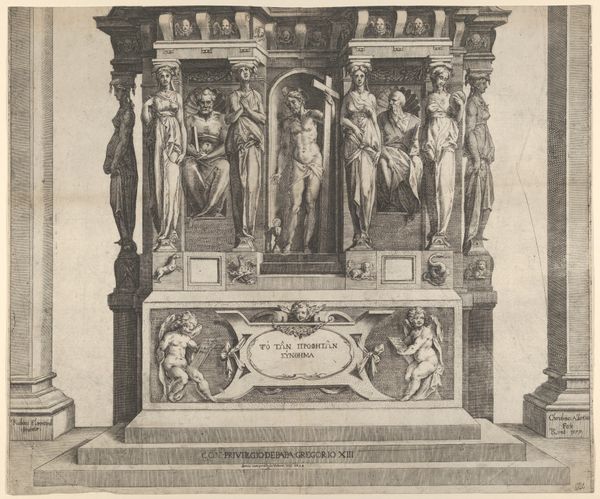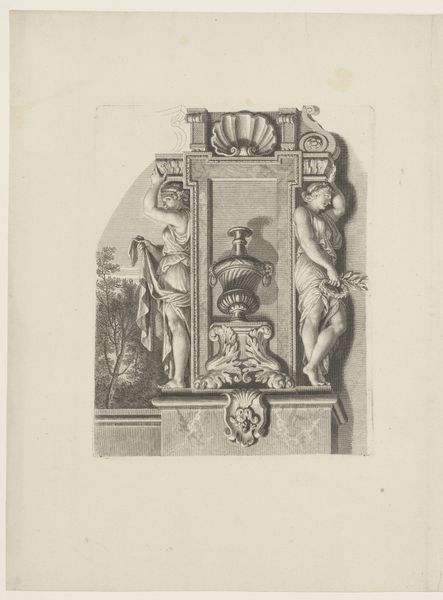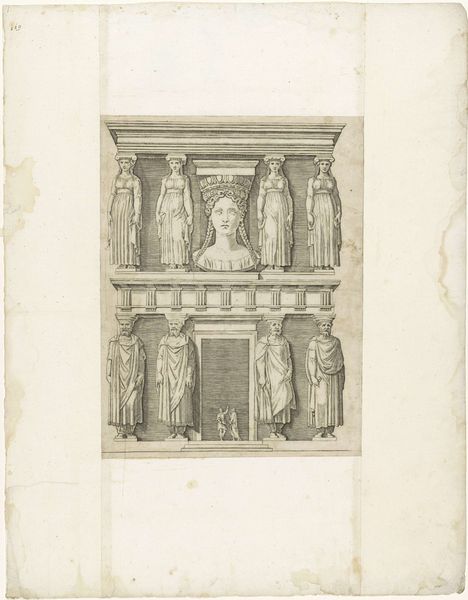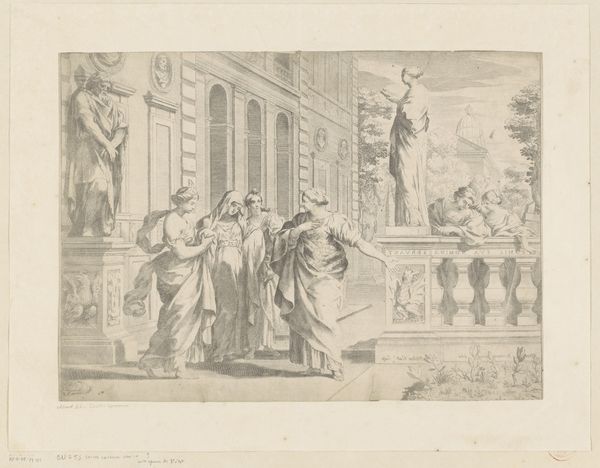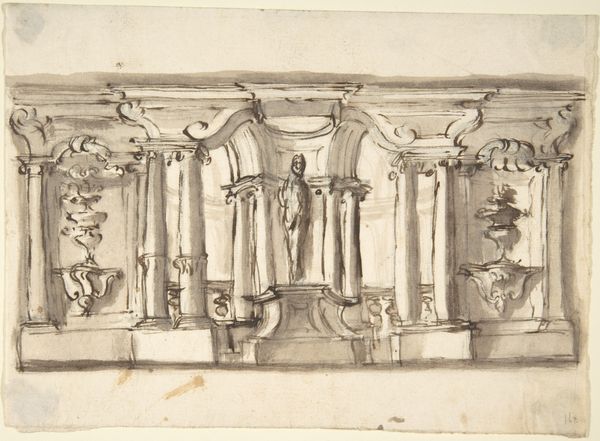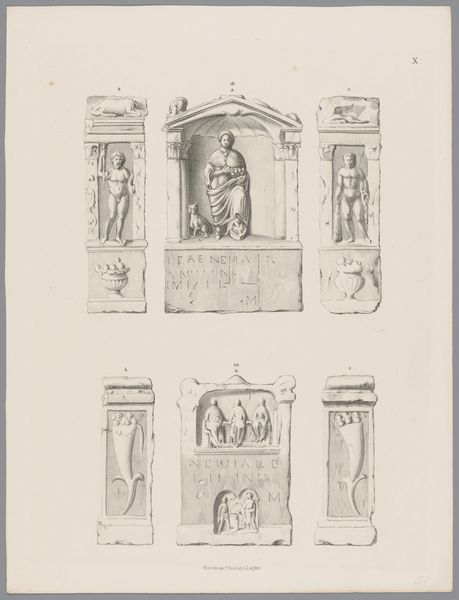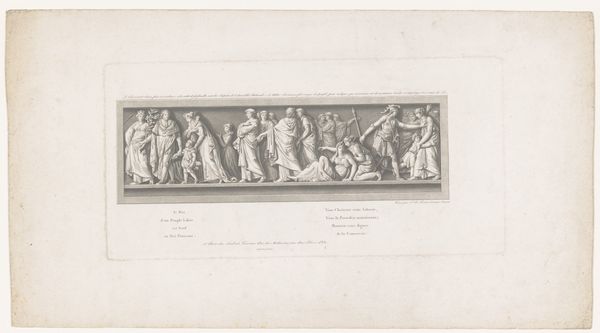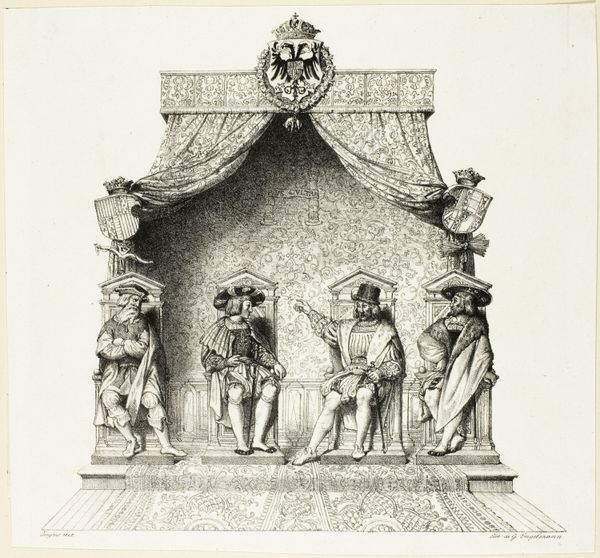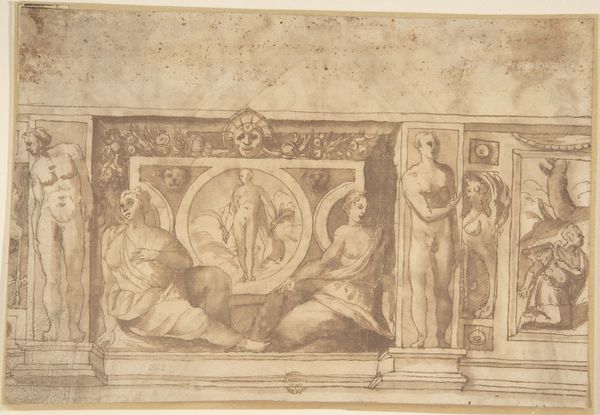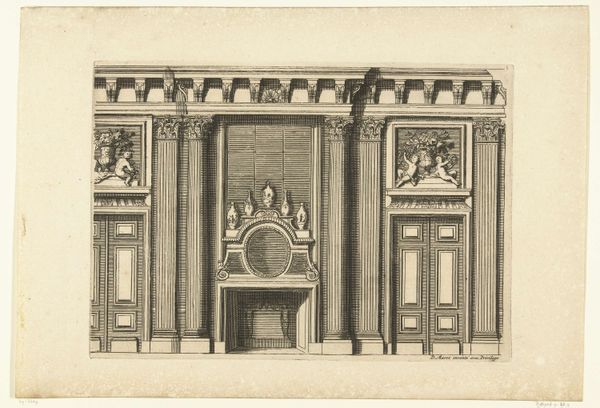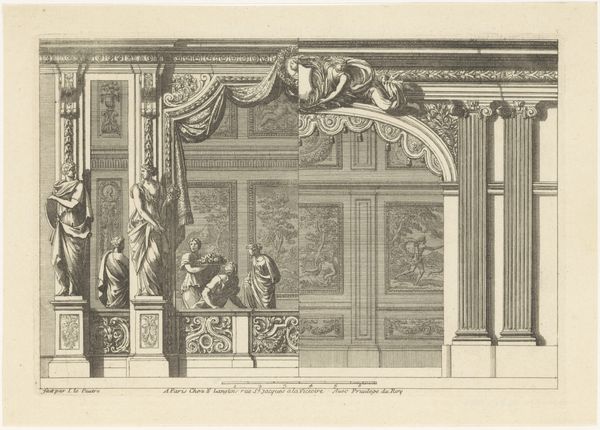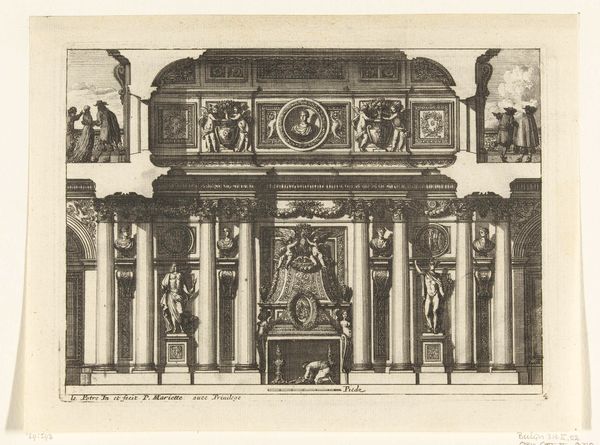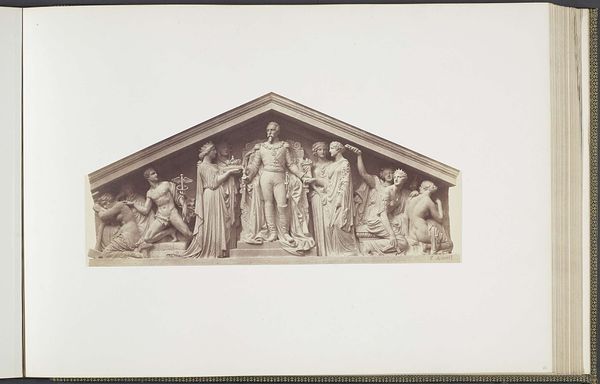
print, engraving, architecture
#
neoclacissism
# print
#
greek-and-roman-art
#
figuration
#
history-painting
#
engraving
#
architecture
Dimensions: 445 mm (height) x 700 mm (width) (plademaal)
Giovanni Battista Piranesi created this etching, "Group of Caryatids," sometime in the 18th century. The print presents a symmetrical arrangement of female figures, the caryatids, supporting a classical entablature. Piranesi’s use of line and shadow creates a sense of depth, framing each figure within an architectural context. The composition guides the eye from the detailed sculptural relief in the pediment, down to the figures, and finally to the inscription at the base. Piranesi uses the caryatids to explore themes of antiquity, architecture, and the sublime. The caryatids challenge the conventional roles of support and decoration, embodying an aesthetic of both strength and elegance. This manipulation of classical forms reflects the intellectual currents of the Enlightenment, where artists questioned established norms and sought to redefine beauty and function. Notice how Piranesi destabilizes traditional architectural representation, inviting us to consider how classical forms can be reinterpreted.
Comments
No comments
Be the first to comment and join the conversation on the ultimate creative platform.
